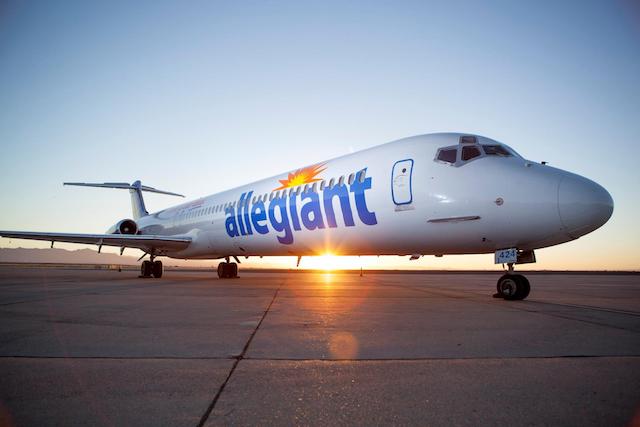
Photo courtesy of Allegiant
Decisions for airlines making investments in providing in-flight Wi-Fi for passengers are strongly driven by the segment of the industry they operate within, as Avionics learned at the 2017 Boyd International Aviation Forecast Summit. Executives from American Airlines, Allegiant and Sun Country provided much different perspectives on investing in aircraft connectivity both for flight operational and passenger usage.
“You have to have Wi-Fi,” said Don Casey, senior VP of revenue for American Airlines, during a question and answer session with reporters. “It’s a core expectation for customers, we think about it that way. Our objective is to create a living room experience in the air.” He noted that the first-generation Gogo technology featured on the majority of American’s domestic fleet today is notably slower than the living-room experience that American would like to establish.
American’s most recent investment in providing faster Wi-Fi for passengers stems from a 2016 selection of ViaSat to equip its Boeing 737 MAX fleet with Ka-band in-flight internet service, which the California-based satellite service provider claims has more capacity in orbit than any other in-flight Wi-Fi provider.
The Texas-based international network carrier’s first 737 MAX will enter into commercial service at the end of November.
“The biggest initiative we have is going to be high-speed Wi-Fi,” said Casey. “Getting to that high-speed internet is one of the biggest customer facing technology changes we’re making.”
Low-cost carriers, though, have expressed different perspectives on featuring in-flight Wi-Fi service on their aircraft. While low-cost carriers represented at the 2017 IAFS event acknowledge that a significant portion of passengers on long-haul flights, and especially those sitting in business class cabins, do want Wi-Fi, it’s not necessarily a necessity for them.
At IAFS, there were a total of four low-cost carriers represented. Spirit Airlines was the only one to reveal that it’s moving closer to signing a deal to equip its entire Airbus A320 fleet with Wi-Fi. Spirit currently operates an all-Airbus fleet of 104 A320s. Tap Portugal already features in-flight Wi-Fi provided by OnAir on its long-haul Airbus aircraft.
Allegiant Air and Sun Country, however, both told Avionics that they’re not currently in a position to invest in in-flight Wi-Fi. Allegiant Air Senior Vice President Lukas Johnson, for example, said the Las Vegas-based low-cost carrier is currently investing more than $1 billion into a new fleet of 100 Airbus A320s and A319s, which will replace its retiring fleet of MD-80s.
But the new aircraft will not feature Wi-Fi, as Allegiant has not received major passenger interest in it.
“Our average flights are around two hours, with virtually no business traffic,” said Johnson. “People are usually just going out to the beach or for leisure travel.”
Johnson said the cost of operating internet service simply would not be worth it if not enough passengers are using the service.
“It’s just not on the radar for us,” he said. “It’s very different than if you’re flying trans-continental, with business class passengers and it’s a requirement to have on your plane.”
Elsewhere, Minnesota-based Sun Country Airlines shared a similar perspective on investing in in-flight Wi-Fi service. Sun Country operates a fleet of 22 Boeing 737-700s/800s and provides passengers with a seven-inch tablet featuring television shows, movies and gaming, but no connection to the internet.
“Connectivity to the internet? I don’t think that’s for us right now,” said Sun Country CEO Jude Bricker, who took over as head of Sun Country in July after serving as executive VP of Allegiant.
“We’re still studying Wi-Fi, but I don’t know if we’re ready to commit to that today,” said Bricker, adding that Sun Country also has found that seat-back devices are no longer economical since most passengers now carry their own personal devices on board.